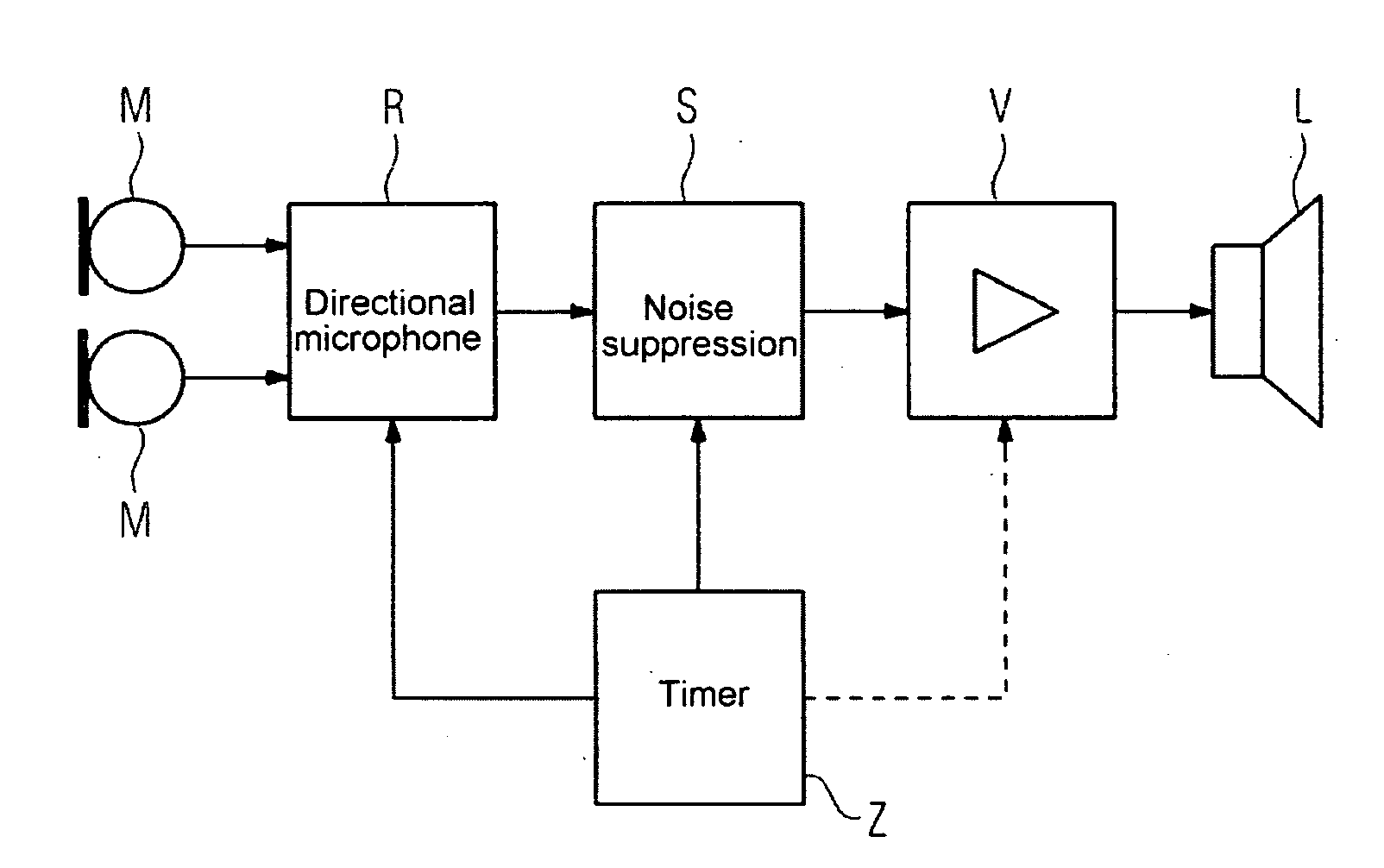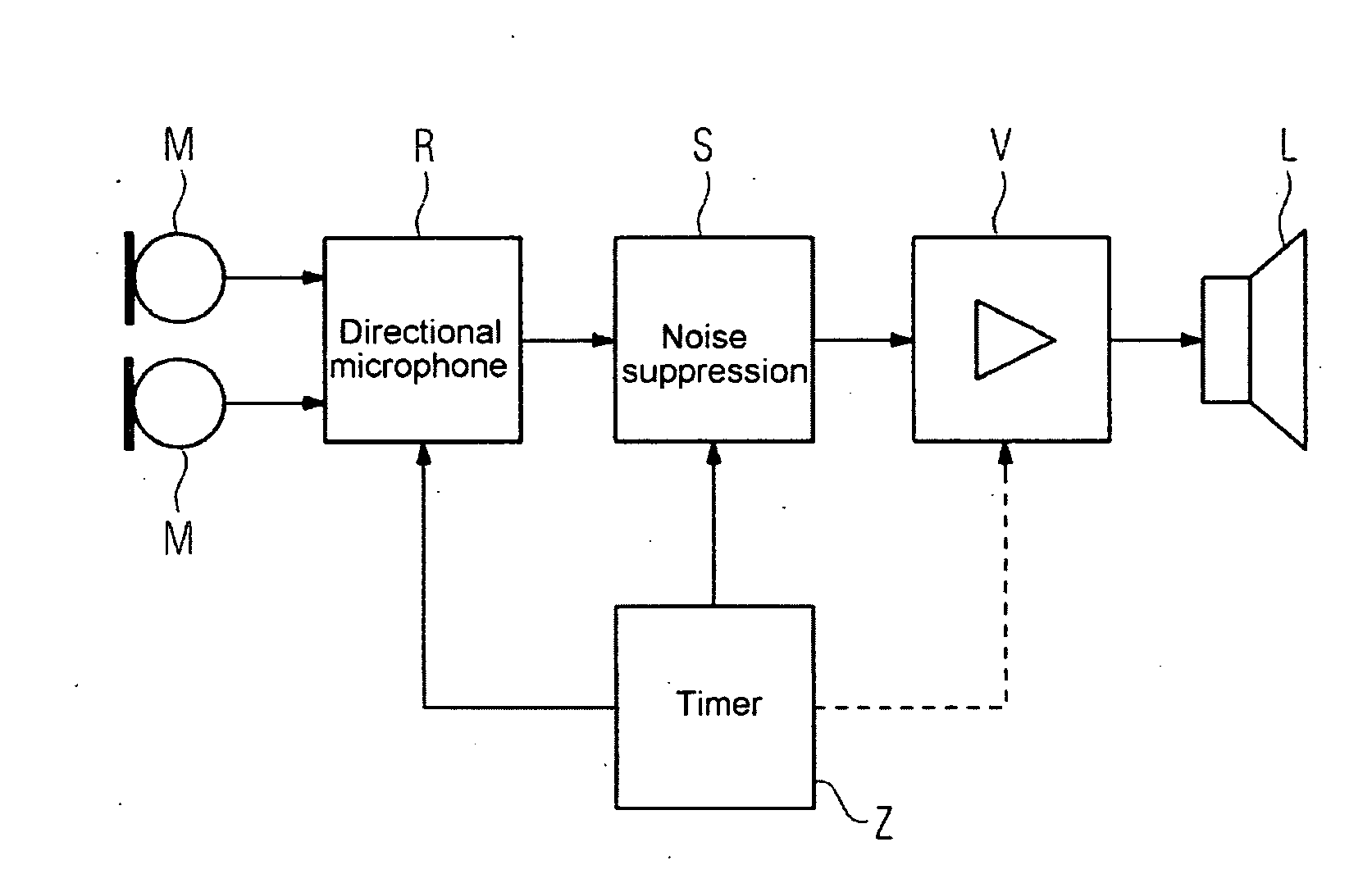Circuit device and method for operating a hearing aid with time-adaptive behavior as well as therapy method for treating hearing problems in children
a technology of circuit devices and hearing aids, which is applied in the direction of measuring devices, electrical appliances, instruments, etc., can solve the problems of differing requirements of person's provision, initial and subsequent provision of hearing aids to hearing-impaired children, and achieve the effect of successive reduction of noise and variation over time of noise reduction
- Summary
- Abstract
- Description
- Claims
- Application Information
AI Technical Summary
Benefits of technology
Problems solved by technology
Method used
Image
Examples
Embodiment Construction
[0021] The exemplary embodiment described in greater detail below represents a preferred embodiment of the present invention.
[0022] In accordance with the example shown in the figure, a directional microphone circuit R processes the signals of two microphones M into one directional microphone signal which is fed to a noise suppression unit S. After the noise suppression unit S the noise-suppressed signal is fed in the usual way to an amplifier V which further amplifies the signal for a loudspeaker L.
[0023] Both the directional microphone circuit R and also the noise suppression are adaptive. This means that at least one parameter of the corresponding algorithms is variable. In the present case this at least one parameter is modified over time with the aid of a timer Z. Accordingly the microphone circuit R and the noise suppression unit S are activated by the timer Z as is shown sketched in the figure. If need be, the amplifier V can also be activated by the timer Z.
[0024] Overall...
PUM
 Login to View More
Login to View More Abstract
Description
Claims
Application Information
 Login to View More
Login to View More - R&D
- Intellectual Property
- Life Sciences
- Materials
- Tech Scout
- Unparalleled Data Quality
- Higher Quality Content
- 60% Fewer Hallucinations
Browse by: Latest US Patents, China's latest patents, Technical Efficacy Thesaurus, Application Domain, Technology Topic, Popular Technical Reports.
© 2025 PatSnap. All rights reserved.Legal|Privacy policy|Modern Slavery Act Transparency Statement|Sitemap|About US| Contact US: help@patsnap.com


